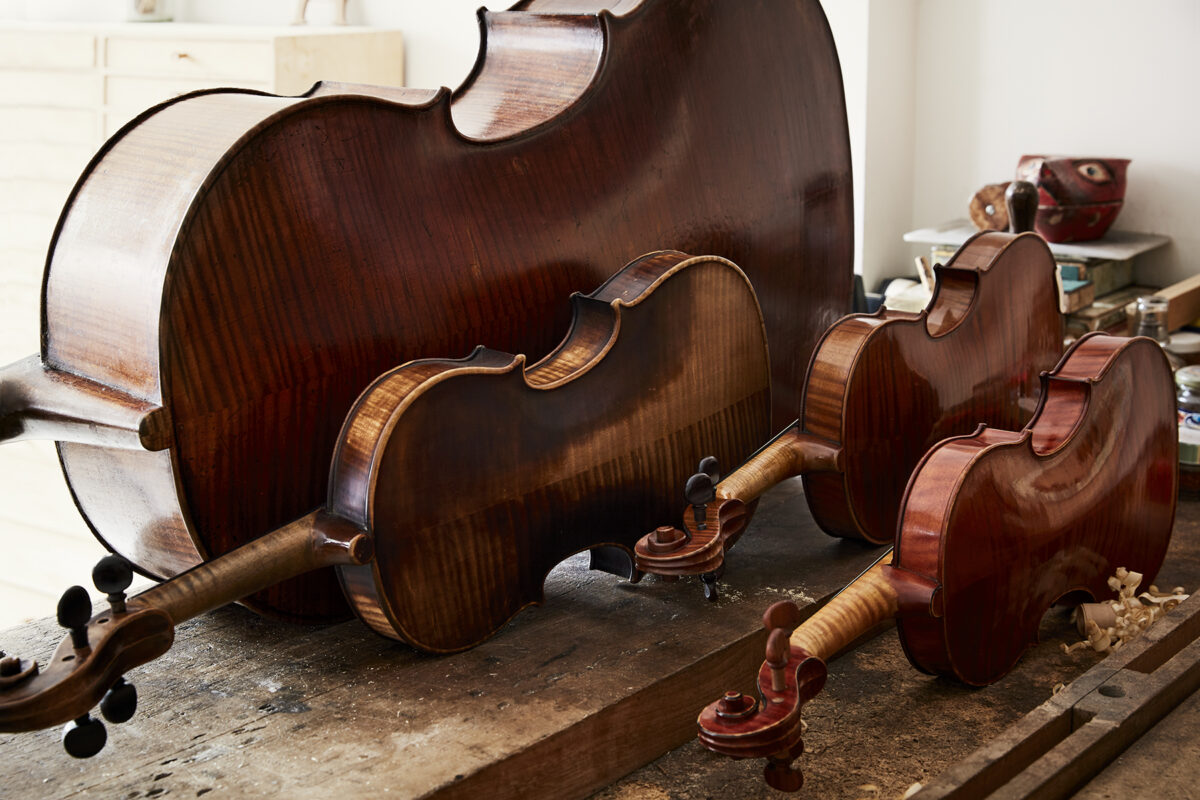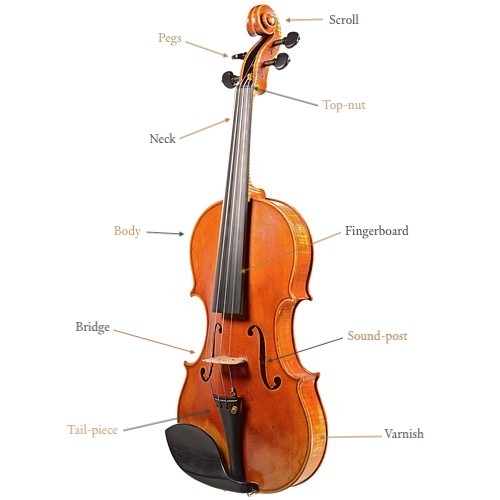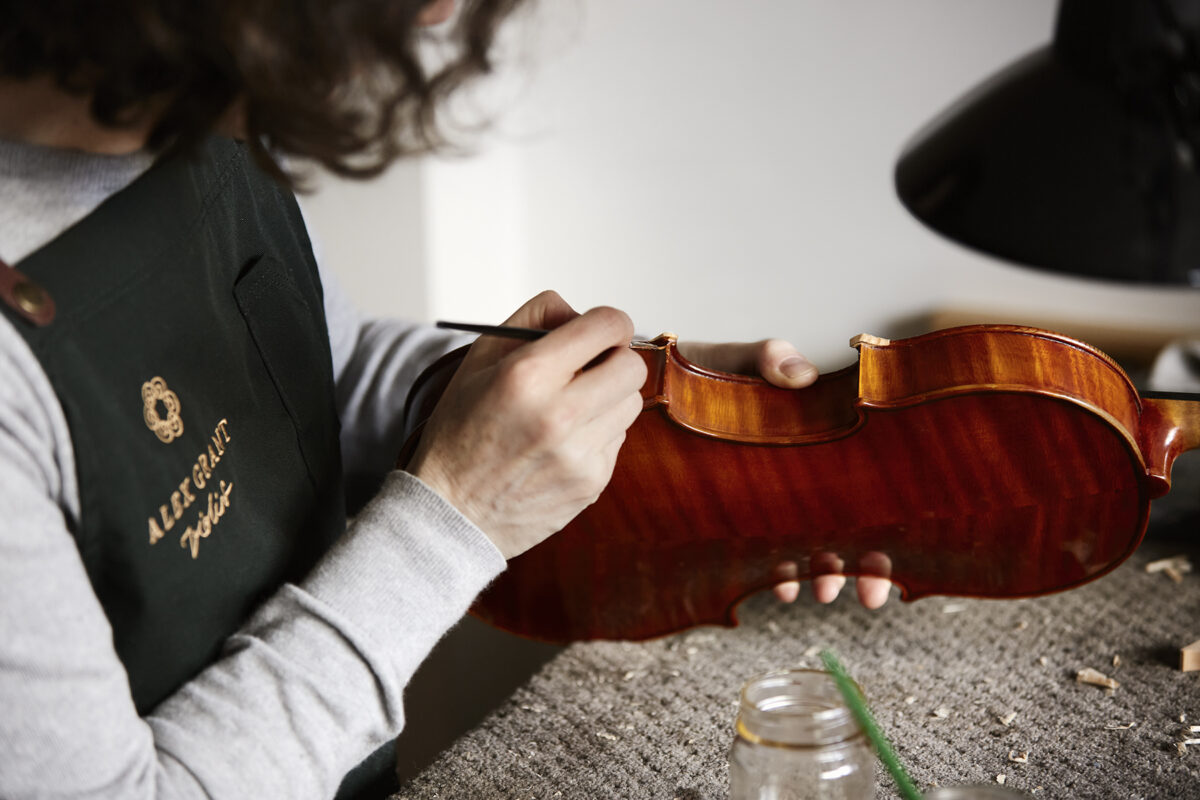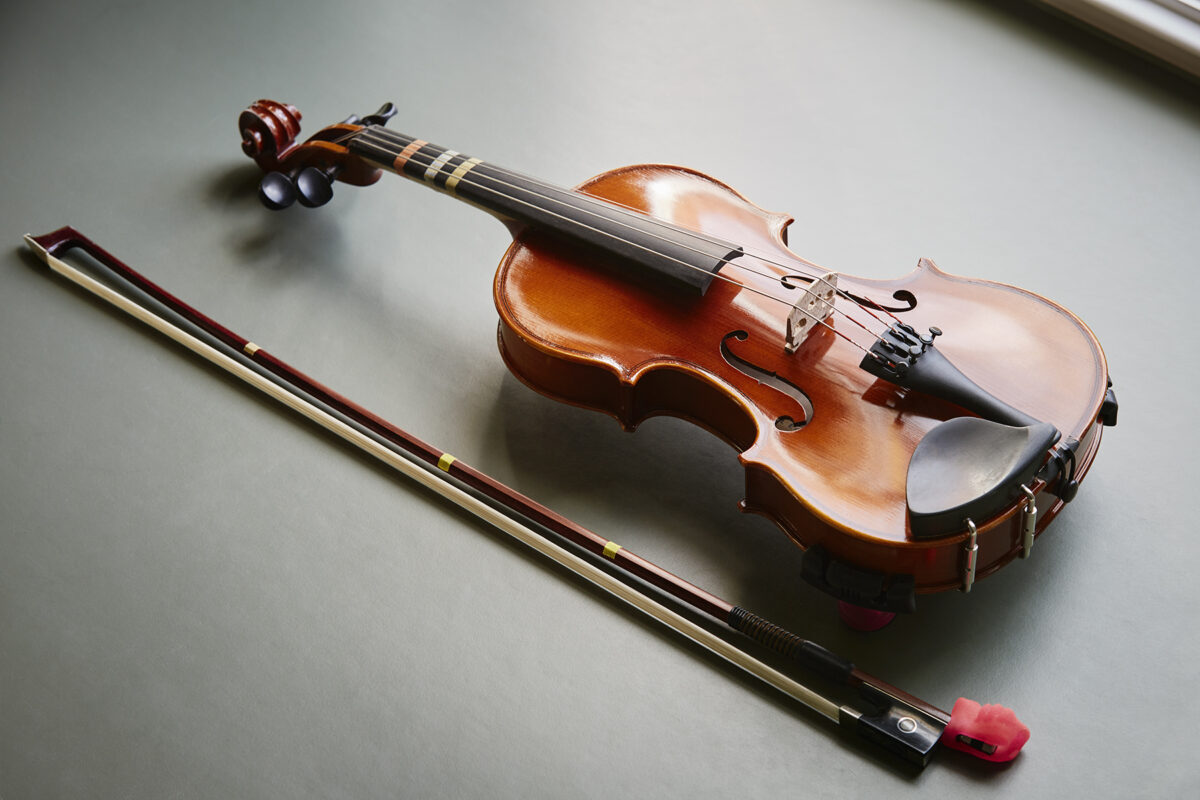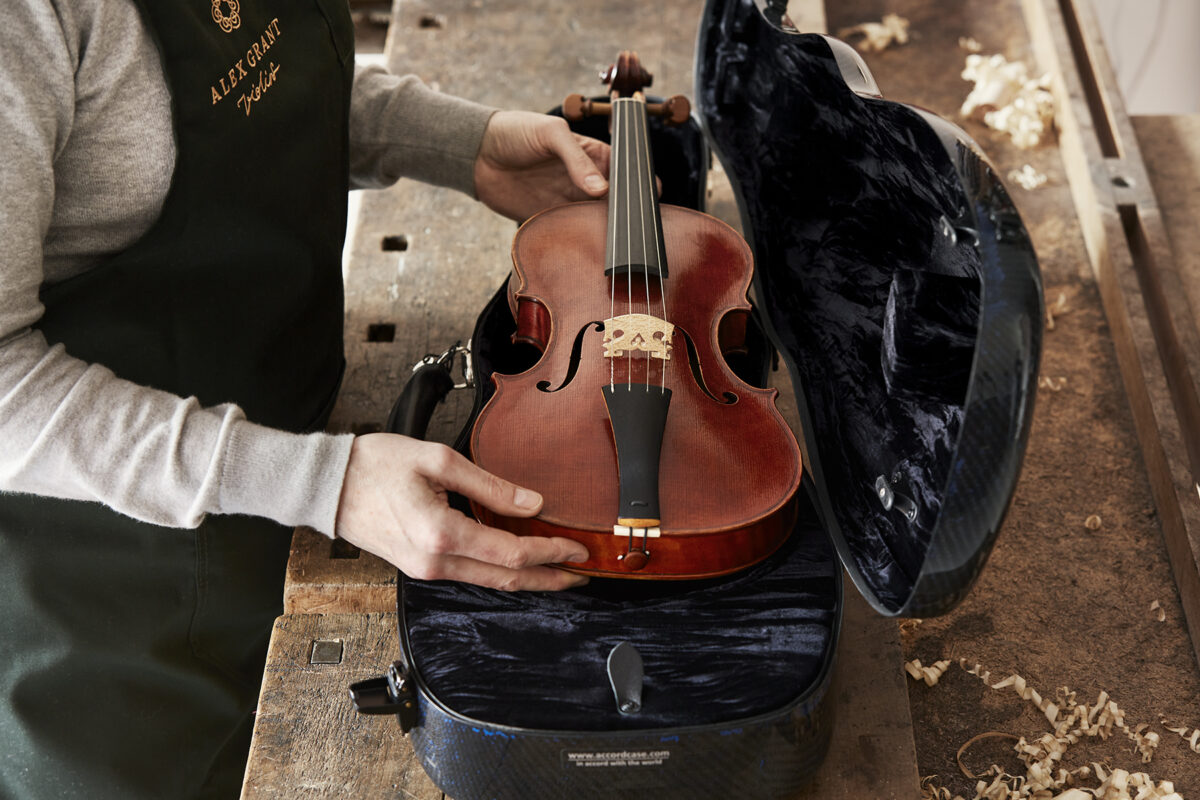The New Musician’s Guide
Violins, violas and cellos are all members of the family of musical instruments often referred to as ‘Orchestral Strings’. They are generally quite robust and, if carefully maintained, a good instrument will last a lifetime – if not several lifetimes (the oldest known violin is around 500 years old!)
All repairs and most maintenance must be carried out by an experienced violin maker who will have the specialist skills, knowledge and tools necessary to carry out the work involved. However, there are many things you can do to keep your instrument in top condition, whilst helping to keep repair costs down.
Think of it this way, if you care for your teeth and visit the dentist regularly your teeth will probably last all your life and ‘maintenance costs’ will be reasonable, but neglect them and soon you will have horrible teeth, a huge dentist’s bill and perhaps, eventually, you will lose all your teeth.
Your instrument is just like this, the only difference being that when you’re 100 years old probably no-one will want your teeth but people will be queuing up to buy your well maintained instrument!
PEGS
Let’s start at the curly end. Here we have the peg box and tuning pegs. The pegs, which are tapered, fit through tapered holes in the peg box and the strings are attached to the pegs, which should turn smoothly.
Pegs which are sticking may be lubricated with a little graphite from a pencil or some peg paste and if they are too loose a little chalk can be applied. If these remedies don’t work, then the pegs need refitting by your instrument maker. Don’t be tempted to force pegs into the peg holes as there is a serious risk of cracking the peg box.
NECK AND FINGERBOARD
The neck seldom needs any attention, but it may occasionally come loose. The fingerboard may also come loose or show signs of wear over a period of time. If either comes loose, slacken the tension off the strings and consult your instrument maker to have it glued up.
Wear marks and bumps in the fingerboard are easily removed from the fingerboard by ‘shooting’ it! – this sounds a bit extreme, but shooting is only the word used by wood workers for smoothing a piece of wood with a plane. Again, consult your instrument maker.
Keep the fingerboard clean by using a dry duster to wipe over it after each time you play.
Cellists – DON’T be tempted to use the fingerboard as a carrying handle!
VARNISH
Wipe over with a dry duster to remove rosin dust after each use. More extensive cleaning of an older instrument is a specialist job and must be left to your instrument maker.
Shoulder rests are responsible for much wear and scratching of the varnish where fitting takes place. Ensure that foam or rubber pads are in good order and that no hard plastic or metal comes into contact with the instrument. Occasionally dust the rubber parts with talcum powder to help reduce friction when fitting.
THE SOUND POST
The sound post is not glued in place so it must be a very precise fit to operate properly. If it falls over, immediately slacken the tension on the strings and consult your instrument maker to have it refitted. When changing strings, change only one at a time, this will help to keep the pressure on the sound post, thereby keeping it in place.
BRIDGE
The bridge is easily damaged and expensive to replace, but if you look after it well it may last for years. Jascha Heifetz managed to keep the same bridge on his violin for over 25 years – try to beat his record.
The action of tuning your instrument pulls the top of the bridge in the direction the strings are moving, i.e. towards the peg box if using the pegs, or towards the tailpiece if fine tuners are mostly used. The result is that the bridge tilts and bends forward and will eventually break. A bent bridge lowers the string heights and changes the bowing clearance, making it more difficult to play. After each major tune up and at least once a week, look at the bridge from side-on and, if necessary, using both hands, grip the upper section of the bridge and gently pull it back until the side facing the tailpiece is approximately at right angles to the top. Ask your teacher to show you how to do this safely. It requires some confidence so practice is the key.
If the top of the bridge does not move easily, slacken the strings off one at a time and lubricate the grooves in the bridge with graphite from a pencil or a little candle wax.
The thinnest strings (A and E) sometimes cut into the top of the bridge. If this happens, immediately consult your instrument maker who should be able to fit a bridge protector at little or no cost.
TAIL PIECE
The tail piece will seldom cause problems and no home maintenance is required, however, if it is a wooden tail piece with separate string adjusters, ensure that the fitting screws are tight to eliminate buzzing.
STRINGS
Strings need only be kept clean by wiping with a dry duster after each use. Modern strings are generally reliable. If strings are breaking regularly consult your instrument maker who will check the points on the violin where the string is put under most stress, this will usually highlight the source of the problem. Strings don’t last forever! They are under a lot of tension and will go dull over time. This happens slowly so sometimes you get used to the dull sound, not realizing that your instrument could sound much better. Violinists and violists should change strings every 6 to 9 months, cellists every 12 months.
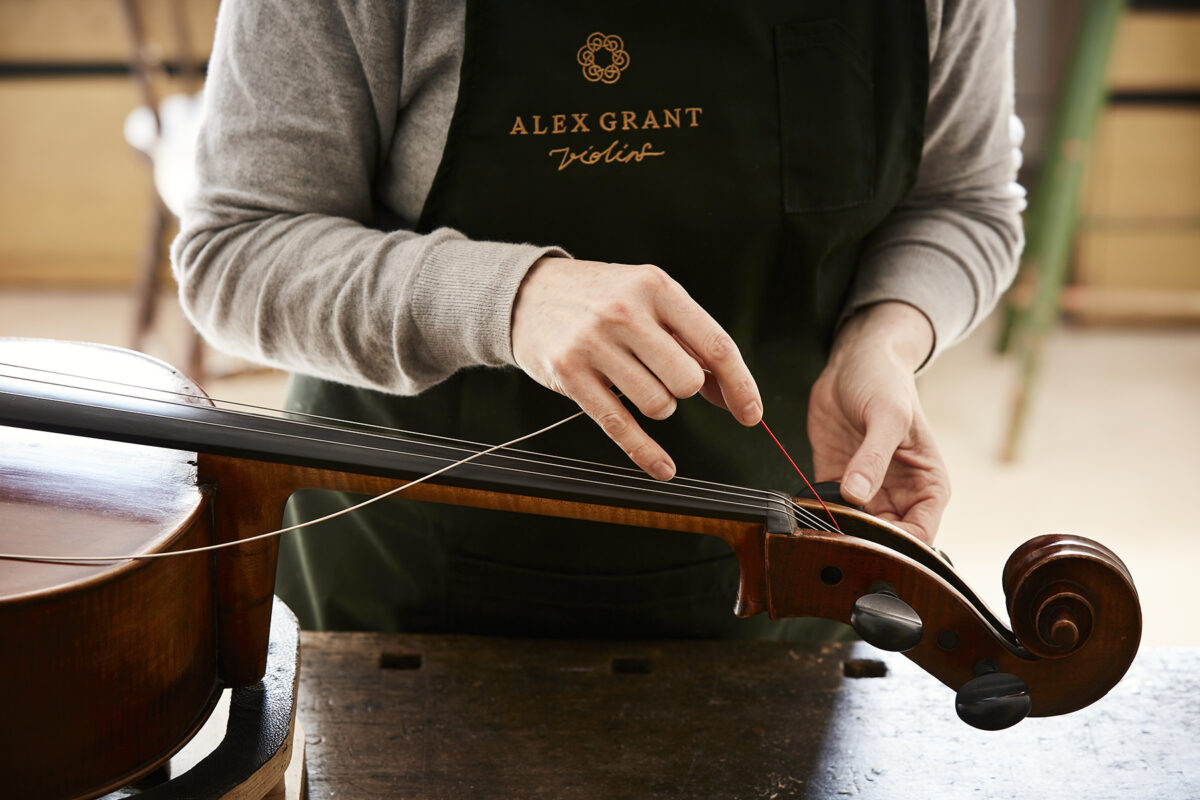
THE BODY
The glue joints between the sides and the top and back occasionally come apart. This is not a serious problem, simply slacken the string tension and consult your instrument maker. Cracks anywhere on the instrument are more serious and must be attended to immediately – never entrust this type of problem to anyone other than an experienced violin maker.
THE BOW
The main rules for looking after your bow are never to touch the hair with your fingers and always release the tension on the hair after use. When the hair starts to show signs of losing its ‘grip’ it is nearly due for a rehair. Rehairing a bow is a very tricky operation, which is best left to your instrument maker or specialist bow maker.
THE CASE
The case is designed to carry only the instrument and whatever small items may fit into the integral ‘pocket’ provided, additional padding is generally not required. Do not carry anything else in the instrument compartment – this includes sheet music – or damage will surely result.
Always make sure that the bow is secure and the shoulder rest is removed and stowed away safely before closing the case to avoid serious risk of damaging the instrument. Ensure that zips and latches are properly secured before picking up the case.
Make sure your case is of good quality, sturdy and protective and in good condition.
